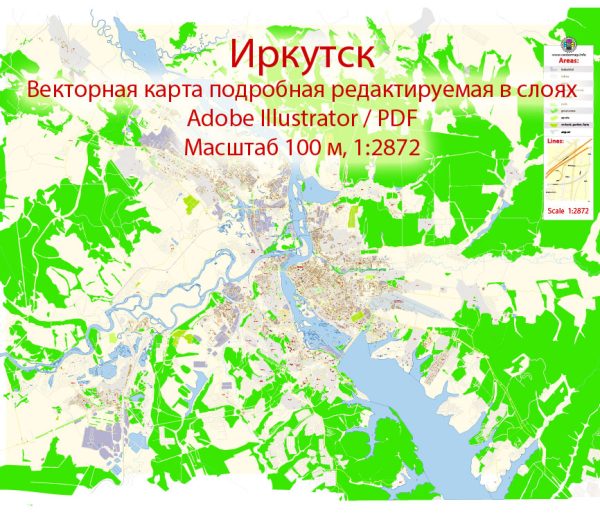Irkutsk, located in southeastern Siberia, Russia, has a rich history of urban development that spans several centuries. Here is an overview of its historical urban development:
- Foundation (1661): Irkutsk was founded in 1661 as a fort by Yakov Pokhabov, who was exploring the region on behalf of the Russian Tsar. The fort was established to protect the eastern borders of the expanding Russian Empire from attacks by indigenous peoples.
- Role in Trans-Siberian Railway (1898): Irkutsk gained strategic importance in the late 19th century with the construction of the Trans-Siberian Railway. The city became a major stop along the railway, facilitating trade and transportation across Siberia. The railway station and associated infrastructure contributed to the city’s growth.
- Architectural Heritage (18th-19th centuries): Irkutsk boasts a number of well-preserved historical buildings from the 18th and 19th centuries. The city’s architecture reflects a mix of styles, including Siberian wooden architecture and Russian classical architecture. Notable structures include the Epiphany Cathedral, the Kazan Church, and the White House.
- Soviet Era (20th century): Like many other Russian cities, Irkutsk experienced significant changes during the Soviet era. Industrialization and urbanization increased, leading to the construction of new residential areas, factories, and infrastructure. The city became an important center for industry, education, and administration in the region.
- Preservation Efforts: Despite the modernization and development, Irkutsk has made efforts to preserve its historical and cultural heritage. The historic center of Irkutsk has been designated a UNESCO World Heritage Site, and restoration projects have been undertaken to protect and maintain the city’s historic buildings.
- Post-Soviet Period (1991-present): With the dissolution of the Soviet Union in 1991, Irkutsk, like many other cities, faced economic challenges. However, the city has seen some economic recovery in recent years, with efforts to diversify its economy and promote tourism.
- Contemporary Urban Development: In recent years, Irkutsk has witnessed modern urban development with the construction of new infrastructure, residential complexes, and commercial spaces. The city has also focused on improving public spaces and transportation.
- Environmental Challenges: Irkutsk has faced environmental challenges, particularly in relation to Lake Baikal, the world’s deepest freshwater lake, located nearby. Efforts are being made to address environmental concerns and promote sustainable development in the region.
Overall, Irkutsk’s history of urban development reflects its strategic location, economic importance, and efforts to balance modernization with the preservation of its historical and cultural heritage.


 Author: Kirill Shrayber, Ph.D.
Author: Kirill Shrayber, Ph.D.